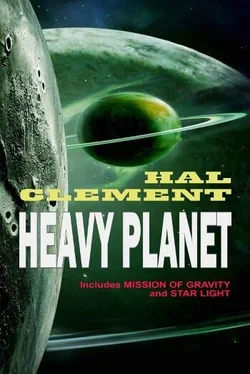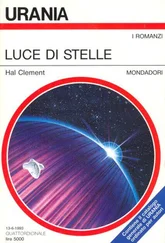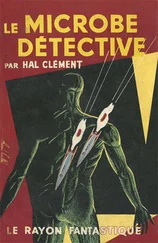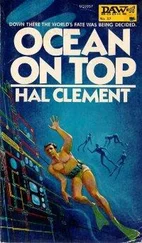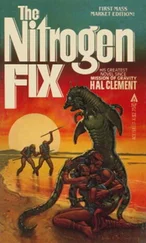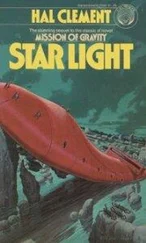“Nothing at all, sir, to us. They may have been talking to the Kwembly without our hearing, of course.”
“True enough. Has word gone to our own weather people?”
“Not as far as I know, sir. There’s been nothing very useful to tell them, but Guzmeen may have sent a message there too.”
“All right. I want to talk to them myself anyway. I’ll be at their complex for the next half hour or more. Tell Guz.” The messenger made the affirmative nipper gesture and vanished through the door he had entered by. Barlennan took another, making his way slowly westward through building after building and over the enclosed connecting ramps which made the Settlement a single unit. Most of the ramps on his course sloped upward, so that by the time he turned south away from the cliff he was some five feet higher than his office, though not yet on a level with the bridges of the land-cruisers behind him. The roof fabric bulged a little more tautly above him, since the nearly pure hydrogen in the station did not drop as rapidly in pressure with increasing altitude as did Dhrawn’s much denser gas mixture. The Settlement had been built at an elevation which was quite high for Dhrawn. The total outside pressure was about the same as that at Mesklin’s sea level. It was only when the land-cruisers descended to lower elevations that they carried extra argon to keep their internal pressure balanced. Since Dhrawn’s air carried about two percent oxygen, the Mesklinites were careful about leaks. Barlennan still remembered the awkward results of an oxygen-hydrogen explosion shortly after he had first encountered human beings. The research complex was the westernmost and highest side of the colony. It was fairly well separated from most of the other structures and differed from them in having a solid, though still transparent, roof. It also came closer than any other part of the Settlement to having a second story, since a number of instruments were mounted on the roof where they could be reached by ramps and liquid-trap air locks. By no means had all the instruments been furnished by the alien sponsors of the Settlement; the Mesklinites had been using their own imaginations and ingenuity for fifty years, although they had not really felt free about doing so until reaching Dhrawn. Like the exploring vehicles, the laboratory complex was a mixture of crudeness and sophistication. Energy was supplied by hydrogen-fusion units; chemical glassware was homemade. Communication with the orbiting station was by solid-state electromagnetic beam transmitter; but messages were carried physically about the complex by runners. Steps were being taken to change this, unknown to the human beings. The Mesklinites understood the telegraph and were on the verge of making telephones able to transmit their own voice range. However, neither telephone nor telegraph was being installed in the Settlement because most of Barlennan’s administrative effort was being concentrated on the project which had provoked Easy’s sympathy for the Esket’s crew. It takes a lot of work to lay cross-country telegraph lines. Barlennan was saying nothing about this to his sponsors. He liked human beings, though he did not go as far in that direction as Dondragmer: he was always aware of their amazingly short life span, which prevented him from getting to really know the people he worked with before they were replaced by others. He was rather concerned about the possibility of human, Drommian, and Paneshk finding out just how ephemeral they all were, for fear it might depress them. It had, in fact, become Mesklinite policy to evade discussion on the matter of age with aliens. It was also policy not to depend more heavily than could be avoided on them. You never knew whether the next ones to take over would have the same attitudes. They were intrinsically undependable, most Mesklinites felt; Dondragmer’s confidence in them was a glaring exception. All this was known to the Mesklinite scientists who saw the commander arrive. Their first concern was with the immediate situation. “Is someone in trouble, or are you just visiting?”
“Trouble, I’m afraid,” replied Barlennan. He briefly outlined Dondragmer’s situation. “Collect anyone you think may be useful and come to the map.” He made way to the forty-foot-square chamber whose floor was the “map” of Low Alpha, and waited. Very little of the area had been “mapped,” so far. He felt, as he had so often before, that there was a long, long job ahead. Still, the map was more encouraging to him than its human counterpart some millions of miles above was to its human viewers. Both showed the arc covered by the land-cruisers and something of the landscape. The Mesklinites had indicated this in spidery black lines suggesting a sketch of human nerve cells, complete with cell bodies. The specific Mesklinite data centered mostly around the spot where the Esket lay. This information, marked in red, had been obtained without direct human assistance. This was one place in the Settlement where there would be no vision transmitter as long as Barlennan was running things. Now, however, he focused his attention several feet to the south of the Esket, where there was discouragingly little data in either red or black. The line representing the track of the Kwembly looked lonesome. Barlennan had raised his front end as high as was comfortable, bringing his eyes six or seven inches from the floor, and was looking at the map gloomily when the scientists began to arrive. Bendivence was either very optimistic or very pessimistic. The commander couldn’t decide which was the more likely reason for his having called nearly twenty people to the conference. They gathered a few feet from him, reared up and waited politely for his information and questions. He started without preamble. “The Kwembly was here at her last report,” he indicated. “It had been crossing a field of snow, water snow, nearly clear of dissolved material but quite dirty according to Don’s science people.”
“Borndender?” queried someone. Barlennan gestured affirmatively and went on. “The snow field started here.” He crawled to a spot nearly four feet northwest of the position marker. “It lies between a couple of mountain ridges, which we have indicated only roughly. Destigmet’s balloons haven’t gotten this far south yet, or at least word hasn’t reached us and Don’s fliers haven’t seen much. just now, while the Kwemb/y was stopped for a routine maintenance check, a heavy wind came up, and then a dense fog of pure or nearly pure ammonia. Then, quite suddenly, the temperature rose several degrees and they found themselves afloat, being blown roughly eastward by the wind. We would like explanations and we badly need constructive advice. Why did the temperature go up, and why did the snow melt? Is there any connection between the two? Remember that the highest temperature they mentioned was only about a hundred and three, twenty-six or-seven degrees below the melting point of water. Why the wind? How long is it likely to last? It’s carrying the Kwembly toward the hot regions inside Low Alpha south of the Esket site.” He gestured toward a heavily red-marked section of the floor. “Can we tell how far they’ll be carried? I didn’t want Dondragmer to go out on this trip, and I certainly don’t want to lose him even if we don’t agree completely. “We’ll call for what help we can get from the men, but you’ll have to use your brains, too. I know some of you have been trying to make sense out of Dhrawn’s climatology; do you have any worthwhile ideas which might apply here?” Several minutes of silence followed. Even those in the group most given to uttering rhetorical speeches had been working with Barlennan too long to risk them now. For some time no really constructive ideas came up. Then one of the scientists scuttled toward the door and vanished, with “Just a moment, I have to check a table” floating behind him. He was back within thirty seconds. “I can account for the temperature and melting,” he said firmly. “The ground surface was water ice, the fog ammonia. The heat of solution as they met and mixed would have caused the temperature rise. Ammonia-water solutions form eutectics which can melt as low as seventy-one.” Mild hoots of appreciation and approving gestures of nipper-equipped arms greeted this suggestion. Barlennan went with the crowd, though words had been used which were not entirely familiar to him. But he was not through with his questions. “Does that give us any idea how far the Kwembly will be carried?”
Читать дальше
